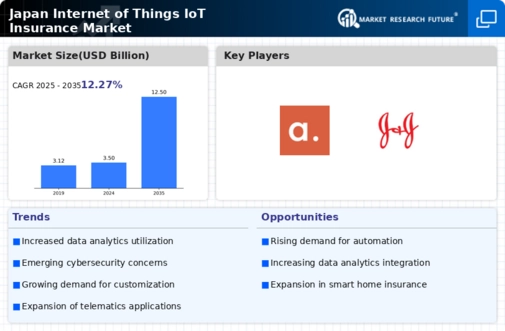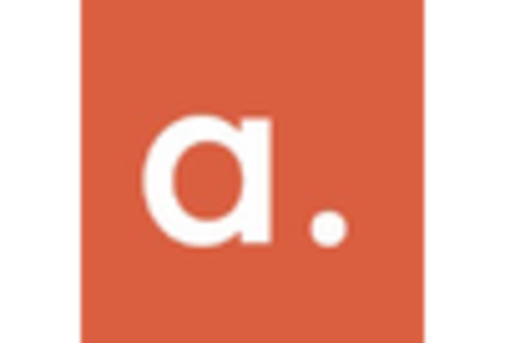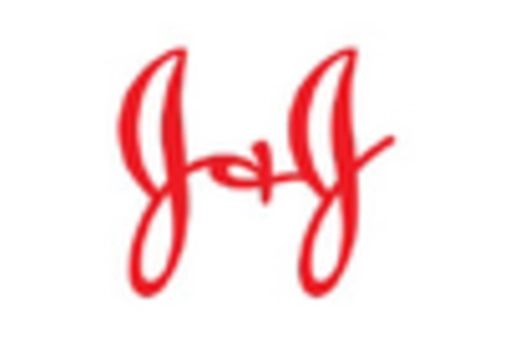Market Growth Projections
The Global Japan Internet of Things IoT Insurance Market Industry is poised for substantial growth, with projections indicating a compound annual growth rate of 12.27% from 2025 to 2035. This growth trajectory reflects the increasing recognition of the importance of insuring IoT-related risks across various sectors. As organizations continue to integrate IoT technologies into their operations, the demand for specialized insurance products is expected to rise. The market's expansion is indicative of the evolving landscape of risk management, where traditional insurance models may need to adapt to accommodate the complexities introduced by IoT.
Growing Cybersecurity Concerns
Cybersecurity remains a pressing issue within the Global Japan Internet of Things IoT Insurance Market Industry. As IoT devices become more prevalent, the risks associated with cyberattacks and data breaches escalate. Organizations are increasingly aware of the vulnerabilities that these devices introduce, prompting them to seek insurance products that provide coverage against cyber threats. This growing concern is likely to propel the market forward, as businesses aim to mitigate potential financial losses stemming from cyber incidents. The anticipated growth in the market underscores the importance of addressing cybersecurity within IoT insurance frameworks.
Rising Adoption of IoT Devices
The Global Japan Internet of Things IoT Insurance Market Industry is experiencing a notable surge in the adoption of IoT devices across various sectors. With an increasing number of connected devices, businesses are recognizing the need for insurance products that cater specifically to IoT-related risks. In 2024, the market is projected to reach 3.5 USD Billion, driven by the proliferation of smart home devices, wearables, and industrial IoT applications. This trend suggests that as more devices become interconnected, the potential for data breaches and operational disruptions rises, thereby necessitating tailored insurance solutions.
Regulatory Developments and Compliance
The Global Japan Internet of Things IoT Insurance Market Industry is influenced by evolving regulatory landscapes that mandate compliance with data protection and privacy standards. Governments are implementing stricter regulations to safeguard consumer data, which in turn drives the demand for insurance products that cover compliance-related risks. As organizations strive to adhere to these regulations, the need for specialized insurance solutions becomes apparent. This regulatory push is expected to contribute to the market's growth, as businesses seek to protect themselves against potential penalties and reputational damage associated with non-compliance.
Emergence of Innovative Insurance Models
The Global Japan Internet of Things IoT Insurance Market Industry is witnessing the emergence of innovative insurance models tailored to the unique challenges posed by IoT technologies. Insurers are developing usage-based and on-demand insurance products that align with the dynamic nature of IoT deployments. This adaptability allows businesses to manage risks more effectively and ensures that insurance coverage evolves alongside technological advancements. As the market continues to expand, these innovative models are likely to play a crucial role in attracting new customers and addressing the diverse needs of IoT stakeholders.
Increased Investment in Smart Infrastructure
Investment in smart infrastructure is a pivotal driver for the Global Japan Internet of Things IoT Insurance Market Industry. As cities and industries transition towards smart technologies, the integration of IoT devices into infrastructure systems becomes essential. This shift not only enhances operational efficiency but also introduces new risks that require insurance coverage. The market is projected to grow significantly, reaching 12.5 USD Billion by 2035, as stakeholders recognize the importance of insuring smart infrastructure against potential failures and cyber threats. This trend indicates a growing awareness of the need for comprehensive risk management strategies.













Leave a Comment